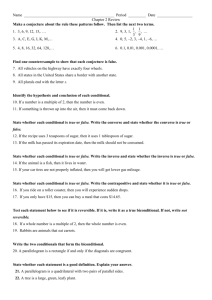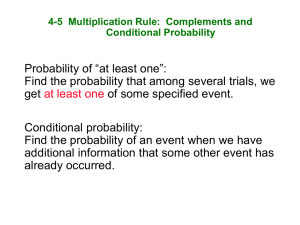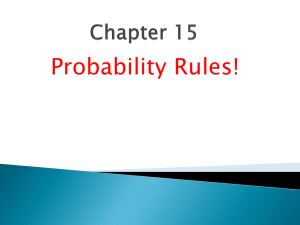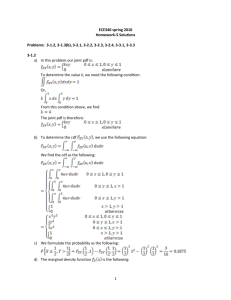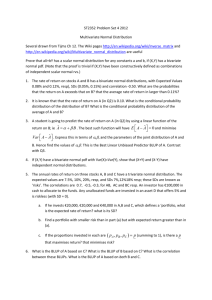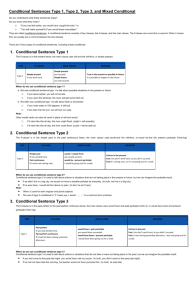Independence of More Than Two Random Variables
advertisement
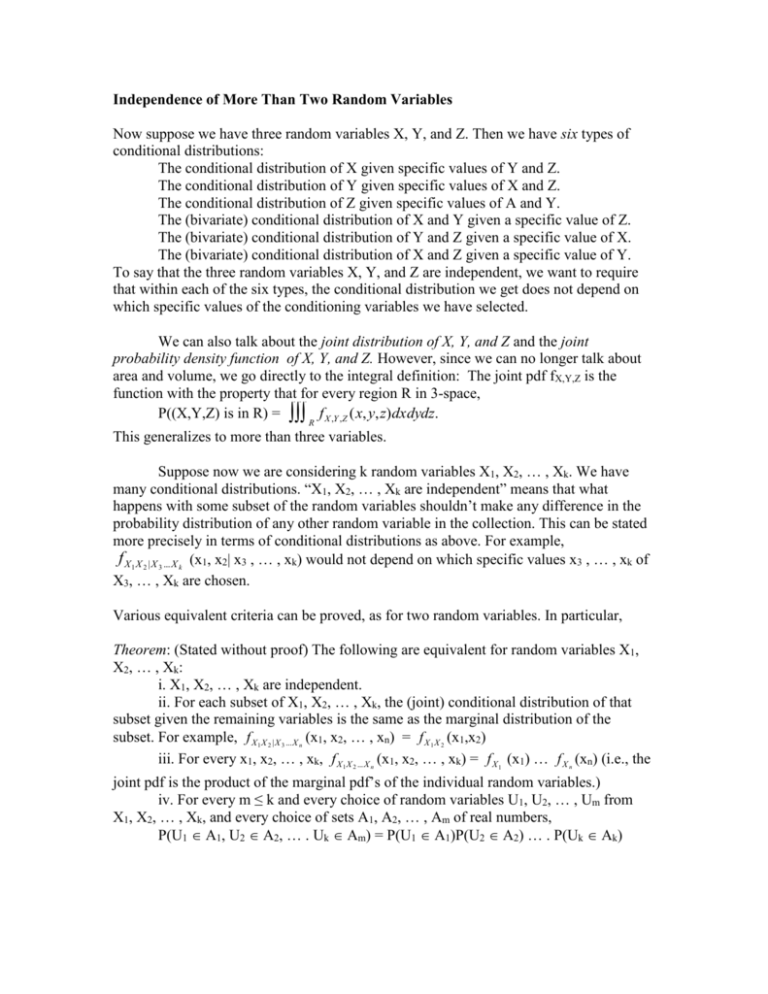
Independence of More Than Two Random Variables Now suppose we have three random variables X, Y, and Z. Then we have six types of conditional distributions: The conditional distribution of X given specific values of Y and Z. The conditional distribution of Y given specific values of X and Z. The conditional distribution of Z given specific values of A and Y. The (bivariate) conditional distribution of X and Y given a specific value of Z. The (bivariate) conditional distribution of Y and Z given a specific value of X. The (bivariate) conditional distribution of X and Z given a specific value of Y. To say that the three random variables X, Y, and Z are independent, we want to require that within each of the six types, the conditional distribution we get does not depend on which specific values of the conditioning variables we have selected. We can also talk about the joint distribution of X, Y, and Z and the joint probability density function of X, Y, and Z. However, since we can no longer talk about area and volume, we go directly to the integral definition: The joint pdf fX,Y,Z is the function with the property that for every region R in 3-space, P((X,Y,Z) is in R) = f X ,Y ,Z (x, y,z)dxdydz. R This generalizes to more than three variables. Suppose now we are considering k random variables X1, X2, … , Xk. We have many conditional distributions. “X1, X2, … , Xk are independent” means that what happens with some subset of the random variables shouldn’t make any difference in the probability distribution of any other random variable in the collection. This can be stated more precisely in terms of conditional distributions as above. For example, f X 1 X 2 |X 3 ...X k (x1, x2| x3 , … , xk) would not depend on which specific values x3 , … , xk of X3, … , Xk are chosen. Various equivalent criteria can be proved, as for two random variables. In particular, Theorem: (Stated without proof) The following are equivalent for random variables X1, X2, … , Xk: i. X1, X2, … , Xk are independent. ii. For each subset of X1, X2, … , Xk, the (joint) conditional distribution of that subset given the remaining variables is the same as the marginal distribution of the subset. For example, f X 1 X 2 |X 3 ...X n (x1, x2, … , xn) = f X 1 X 2 (x1,x2) iii. For every x1, x2, … , xk, f X 1 X 2 ...X n (x1, x2, … , xk) = f X 1 (x1) … f X n (xn) (i.e., the joint pdf is the product of the marginal pdf’s of the individual random variables.) iv. For every m ≤ k and every choice of random variables U1, U2, … , Um from X1, X2, … , Xk, and every choice of sets A1, A2, … , Am of real numbers, A )P(U A ) … . P(U A ) P(U1 A1, U2 A2, … . Uk Am) = P(U1 1 2 2 k k


